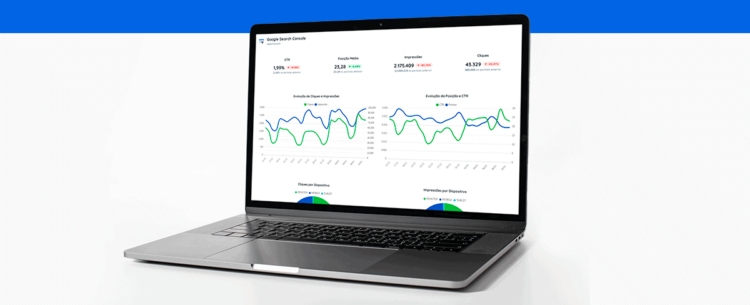Are you about to get your campaigns up to date but unsure what to analyze to understand if the results are satisfactory? We will explain how to measure inbound marketing strategies
Inbound Marketing was named for the approach of attracting interested parties and capturing customers through relationships. The concept was initially developed by HubSpot in the early 2000s.
The main differences between inbound and outbound marketing lie in the form of conversion: outbound actively prospects customers, interrupting their browsing (when online), while inbound offers a subtler approach, waiting for the person to make the first contact by interacting with some relevant content produced by the company.
It’s the difference between a billboard on the street, a distribution of leaflets (outbound), and a campaign with the different visuals a customer can create with the shirts from a store (inbound).
These examples are from the offline world precisely to show that the concepts exist outside the digital realm but are better applied on the internet:
- outbound: direct sales through ads, messages in the inbox, etc.;
- inbound: use of social networks, contact capture for newsletters, production of rich material, blogs, and SEO, etc.
Common Inbound Marketing Strategies
Inbound is the marketing of attraction. Instead of trying to convince everyone who interacts with the brand to make a purchase on the first contact, companies develop a relationship with contacts and prepare them for the sale.
This does not mean selling to fewer people; on the contrary, it means selling more. In outbound marketing, anyone who is not ready to purchase is discarded. In inbound, they enter a journey of education and preparation that, over time, may lead them to want to buy something.
The main inbound strategies are listed below with a brief summary.
Social Networks
Social networks exist not just for user consumption, checking meme profiles and gossip, following celebrities, and talking to friends. They are also very valuable tools in building the relationship between brands and consumers.
Different companies use different platforms, all according to their customer profile. For retail brands, for example, Instagram is an excellent recommendation. For those working in B2B, LinkedIn is the best choice.
The important thing is to have intention and planning. The intention serves to direct and structure communication around a specific point: what to say and how to talk to your audience. Planning is used to create a cadence and continuity of publications to engage the algorithm and followers, in addition to focusing on your points of interest.
Social networks need not be showcases of products and services; they can also expand communication with existing customers and offer useful tips or data.
SEO
SEO, or search engine optimization, is a set of practices and strategies for content development and site optimizations to ensure that domains and pages are found by Google, Bing, and others.
SEO is very useful because it offers solid long-term results and puts your company’s website in a very favorable position: the first page of search results.
Just to give you an idea of how important this is: less than 25% of users go to the second page of searches according to some marketing reports. In practice, those not appearing among the top ten have little chance of attracting users – and the top three positions convert the best.
SEO mixes keyword research with structural improvements like naming and compressing images, sitemaps, etc.
Blog
Complementary to SEO, blogs are useful tools in inbound marketing strategies. First, because they help companies fight for Google’s top position for relevant terms, and second, because they provide valuable content for users to access and offer greater authority to brands.
A blog is another form of contact between companies and their potential customers, there to educate and inform about the problems people want to solve, possible solutions to these issues, and how brands operate in this process.
The more complex a business’s area of activity, the more important the blog is to help educate potential customers.
Email Marketing
Email marketing is definitely one of the main pillars of inbound. These strategic sends provide standardized and customizable communication for the lead base (users registered with your company who voluntarily offered their personal data such as name, phone, and email).
Email marketing can come in the form of a newsletter, a regular communication sent weekly, biweekly, or monthly, or in the form of automation flows, which are related to specific conversions such as the rich materials we will see below, quote pages, or other triggers within your site.
To make good email marketing you need:
- an interesting and eye-catching subject that is not appealing and false;
- content that is to the point and suited to the language of your potential customers that shows: why you are sending an email, what you have to offer, and why it is important (with data or facts to support your argument);
- a strong CTA (call to action) to assist in conversion, which could be responding to the email, calling the sales team, or clicking a button to access some different content.
Rich Materials
Rich materials exist in many different forms but have a single goal: to ensure user data to turn them into leads. Normally, rich materials work with the mental trigger of reciprocity: companies offer something and, in exchange, ask for a way to contact to continue talking with potential customers.
Common forms of these materials are eBooks, webinars, email sequences in the form of courses, infographics, checklists, comparative guides, quizzes, and many others.
Rich materials are usually offered through a landing page, a special page made exclusively for conversion. Unlike websites, landing pages (or LPs) are easy to create and edit, usually with the help of a specific platform for this.
Rich materials are one of the best ways to offer exclusive value to a user and show the relevance of your business in the digital environment.
Important Metrics for Inbound
And what are the main metrics for each of the strategies mentioned above? Follow the guide to know the main ones.
Metrics for Social Networks
Here it’s important to pay attention and not focus on so-called “vanity metrics,” which show more social engagement to the public than direct results for your brand. Some valuable metrics are Comments and Shares, more intentional interaction actions than Likes, for example.
For social media ads, other important metrics include CTR (click-through rate) and CPA (cost per action).
Metrics for SEO
For SEO, two important metrics are the positioning of keywords and site speed on Google PageSpeed Insights.
Tools like Google Search Console help marketing professionals understand the main optimization challenges.
Metrics for Blog
For blogs, important metrics are related to the growth in the Number of New Users, Time Spent on Page, Traffic by Channel, Pages per Visit, Pages with the highest views.
Metrics for Email Marketing
For email marketing, important metrics are Open Rate, Bounce Rate, and Click-Through Rate.
Metrics for Rich Material
For rich materials on Landing Pages, it’s important to analyze the Conversion Rate (of the people who entered, how many registered).
Measuring Strategies with Reportei
Reportei is a reporting tool with integration for the main digital marketing tools on the market, including platforms like Meta (Facebook and Instagram), LinkedIn, Google Analytics, Pipedrive, PhoneTrack, Active Campaign, Hotmart, RD Station, TikTok, YouTube, and much more.
To measure your inbound marketing strategies in Reportei, you need to connect your accounts from each platform within the tool and request a report issuance. There, you can see all the metrics we mentioned above and many others.
For ads on Meta Ads (Facebook Ads and Instagram Ads), LinkedIn Ads, TikTok Ads, and Pinterest Ads, for example, you can assess what the costs per ad are, results generated, return on investment (ROI), return on ad spend (ROAS), cost per click (CPC), cost per action (CPA), conversion rate (CTR), and more.
The ideal way to measure your strategies is to develop plans that are at least quarterly, so you can observe the variation, growth, or decline in the various indicators mentioned above.
Monthly analysis shows well whether the changes made by your marketing team yielded results or not, and comparisons of longer periods help to identify seasonality and specifics of your business.
Additionally, it’s necessary to understand that each metric points to success in a distinct period.
High expenses on ads with little financial return need to be urgently reviewed, as they represent costs without income generation and should have results in the short term (one to two weeks).
In the case of social networks, SEO, and blogs, it’s necessary to wait two to three months to start seeing the efficiency of the strategies, even though the first two months already show whether you are performing your optimizations and content and keyword planning correctly.
In 3 seconds, it’s possible to generate professional reports and dashboards even without prior experience with the tool. Just integrate the accounts when setting up the profile and start monitoring the metrics.
With just a few clicks on the project dashboard, anyone can generate the desired social media and platform reports. Just click on the reports tab, then on New Report. After that, choose the template (there are standard models and the possibility to create your own parameters) and click Continue.
After that, simply select the analysis and comparison period, the desired social networks and platforms, click Finish and Generate Report.
In other words, less than 10 clicks to understand the performance of your strategies in the digital medium.





